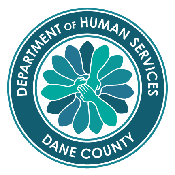
The rules and regulations governing the activities of the CDBG Program include the Laws as enacted by Congress and the Regulations created by HUD to achieve the result prescribed by the Laws. HUD provides guidance on the CDBG Program through CPD Notices and Policy Memoranda.
The rules and regulations governing the activities of the HOME program include the Laws as enacted by Congress, and the Regulations created by HUD to achieve the result prescribed by the Laws. HUD provides guidance on the HOME program through HOME CPD Notices, HOME Policy Memos, HOMEfires, and HOME FACTS.
This guide, developed by HUD, is intended for public officials and citizens seeking to understand what activities are eligible to be assisted under the Community Development Block Grant (CDBG) Entitlement Program and to guide them in making wise choices among certain alternatives available within the program for carrying out particular activities. While the statute, as amplified by the regulations, provides the authoritative version of program requirements, this Guide: Organizes eligibility requirements in a more accessible and understandable format; provides additional explanatory materials, including examples; provides guidance on the factors to be considered in selecting among alternative categories of eligibility and national objectives, where applicable; and provides guidance on accessing additional CDBG resources that may be available to a community.
The purpose of this handbook is to provide subrecipients of CDBG Formula funds with an explanation of the basic administrative requirements of the CDBG program. The Reader is urged to refer to the requirements specified in the County Contract and to State rules in addition to the information presented in the handbook.
The U.S. Department of Labor updates its Prevailing Wage Resource Book. Here you can also find other Labor Standards resources and Davis-Bacon Related Acts (DBRA).
The System for Award Management (SAM) is the Official U.S. Government system that consolidated the capabilities of CCR/FedReg, ORCA, and EPLS. This system is to be used to search whether businesses are debarred, suspended, or otherwise excluded from participation on federal assistance programs. No contracts may be awarded at any tier to any party that is debarred, suspended, or otherwise excluded from participation on federal assistance programs. The information is to be printed out by the funded organization and retained in their files. It will be reviewed by the County as part of ongoing monitoring.
The HUD User site provides information on the most recent Dane County/Madison area income limits under the CDBG program. HUD calculates Area Median Income (AMI) limits for very low; low; and, moderate income persons to determine eligibility for a variety of federal programs including CDBG and HOME. The same AMI limits are used for Dane County and the City of Madison since HUD defines all of Dane County as one distinct housing market. The most recent year's income limit classifications for the Dane County/Madison area can be accessed below. View HUD User Site.
Below is a listing of the communities participating in the Dane County Urban County Consortium. Persons benefitting from CDBG assistance must reside in one of the participating communities.
This directory provides a listing of certified emerging small business enterprises in Dane County.
The National Affordable Housing Act requires, to the maximum extent possible, outreach to minority and woman-owned businesses in all contracting activities entered into by CDBG grantees and sub-grantees. The Targeted Business Enterprise directory is maintained by the City of Madison contains listings for a variety of types of business enterprises.
This Guidebook sets forth the policies and procedures being implemented by the City of Madison and Dane County to comply with the Section 3 requirements. Section 3 applies to training, employment, contracting, and other economic opportunities arising in connection with HUD funded construction projects. Section 3 is triggered when the normal completion of construction and rehabilitation projects creates the need for new employment, contracting, or training opportunities. HUD considers recipients of covered funding to be in compliance with Section 3 if they meet the numerical goals set forth at 24 CFR Part 135.30. Specifically:
The funded organization is to complete a Section 3 Plan and submit it to the County. View Section 3.